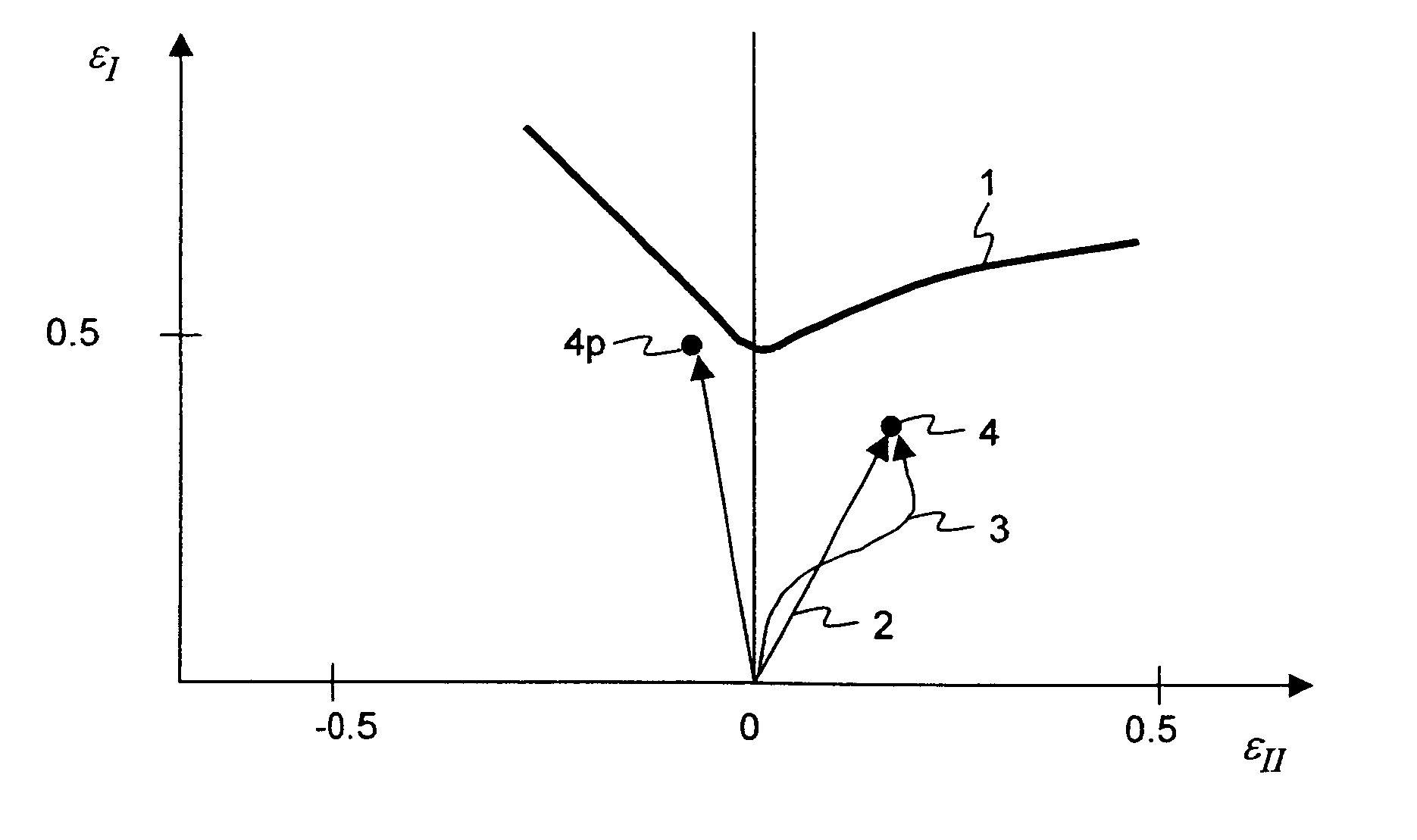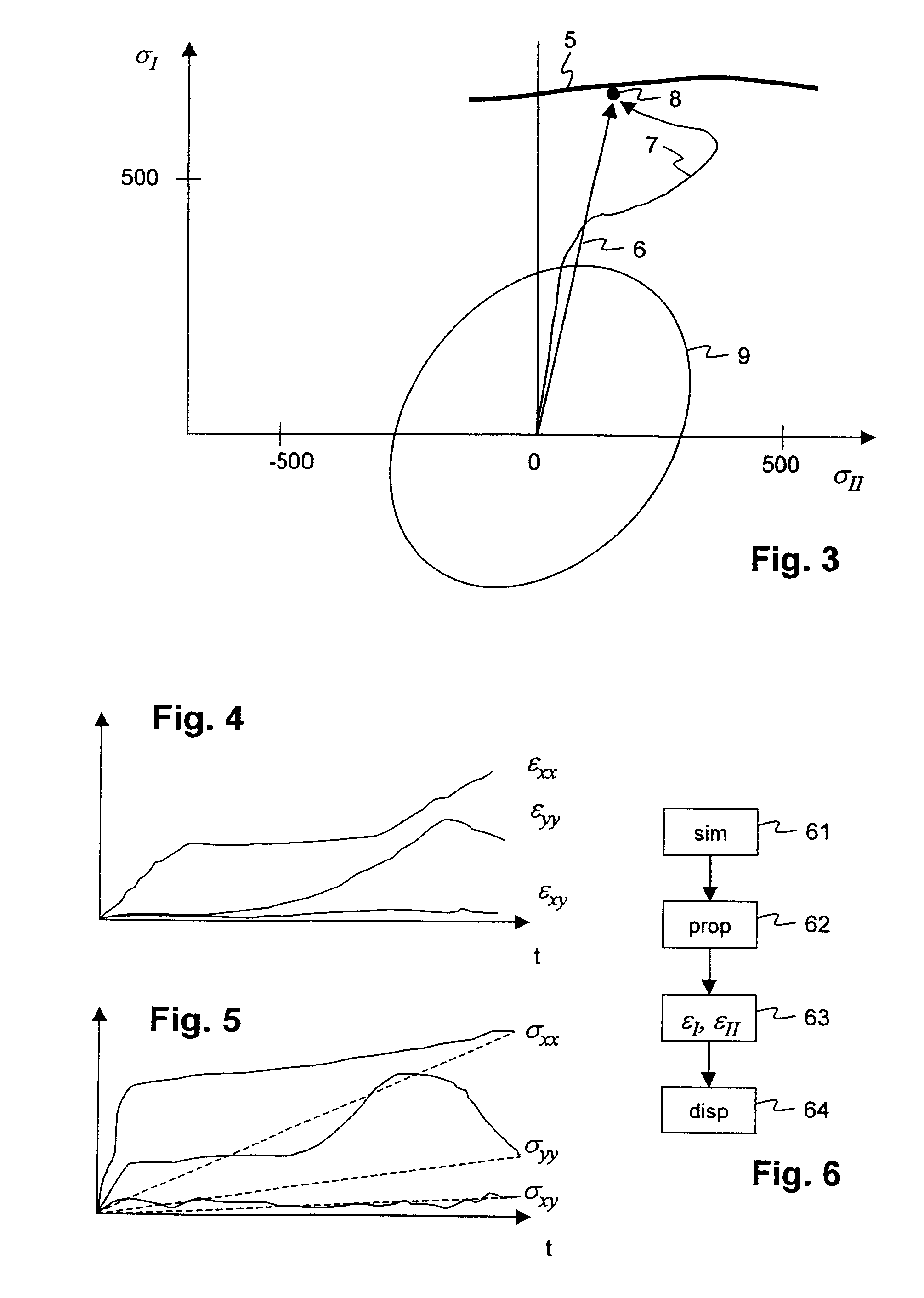Forming limit strain analysis
a strain analysis and forming technology, applied in the direction of cad techniques, tensile/compressive force-using materials, instruments, etc., can solve the problems of low stress sensitivity, comparability and intuitive assessment of strain states lost in this manner, and non-proportional strain paths occur in real forming processes, so as to improve the ability to interpret and represent the effect of reducing the difficulty
- Summary
- Abstract
- Description
- Claims
- Application Information
AI Technical Summary
Benefits of technology
Problems solved by technology
Method used
Image
Examples
Embodiment Construction
[0041]In each case, in a material point, a given material state with respect to its strains is represented by an equivalent strain state, wherein the equivalent strain state is produced by a proportional strain trajectory, which leads to the same stress state which the given material state has. The given material state is hereinafter called “target state”, since the desired proportional strain trajectory is indeed to lead to this state.
[0042]The stresses in the target state are represented for example by way of a plane stress state or a plane stress tensor [σxx, σyy, σxy]. By way of a main axis transformation, the stress state [σxx, σyy, σxy] in the known manner is represented by a major stress and a minor stress σI, σII, and may be represented by a point 8 in the stress plane, as in FIG. 3. The stresses are determined by way of FEM-simulation of the forming operation to be examined. The generally known yield surface (or yield locus) 9 is also drawn in the stress plane. FIG. 5 shows...
PUM
| Property | Measurement | Unit |
|---|---|---|
| equivalent plastic strains εijp | aaaaa | aaaaa |
| equivalent plastic strain | aaaaa | aaaaa |
| plastic multiplier | aaaaa | aaaaa |
Abstract
Description
Claims
Application Information
 Login to View More
Login to View More - R&D
- Intellectual Property
- Life Sciences
- Materials
- Tech Scout
- Unparalleled Data Quality
- Higher Quality Content
- 60% Fewer Hallucinations
Browse by: Latest US Patents, China's latest patents, Technical Efficacy Thesaurus, Application Domain, Technology Topic, Popular Technical Reports.
© 2025 PatSnap. All rights reserved.Legal|Privacy policy|Modern Slavery Act Transparency Statement|Sitemap|About US| Contact US: help@patsnap.com



